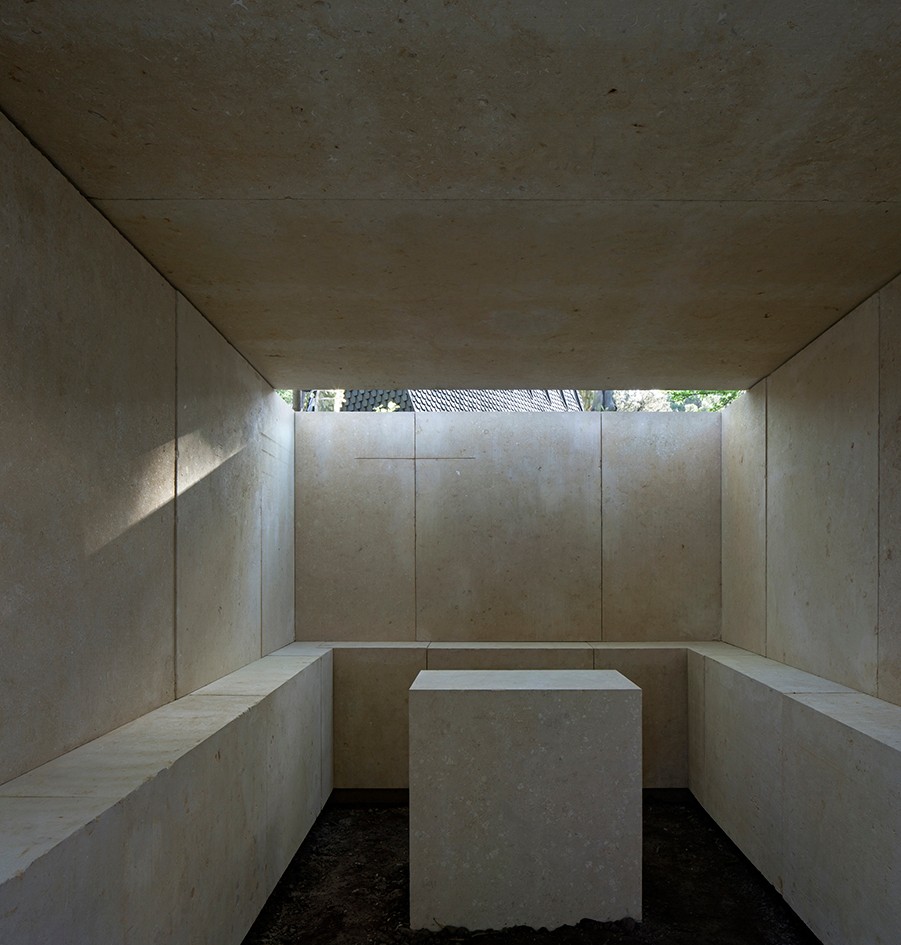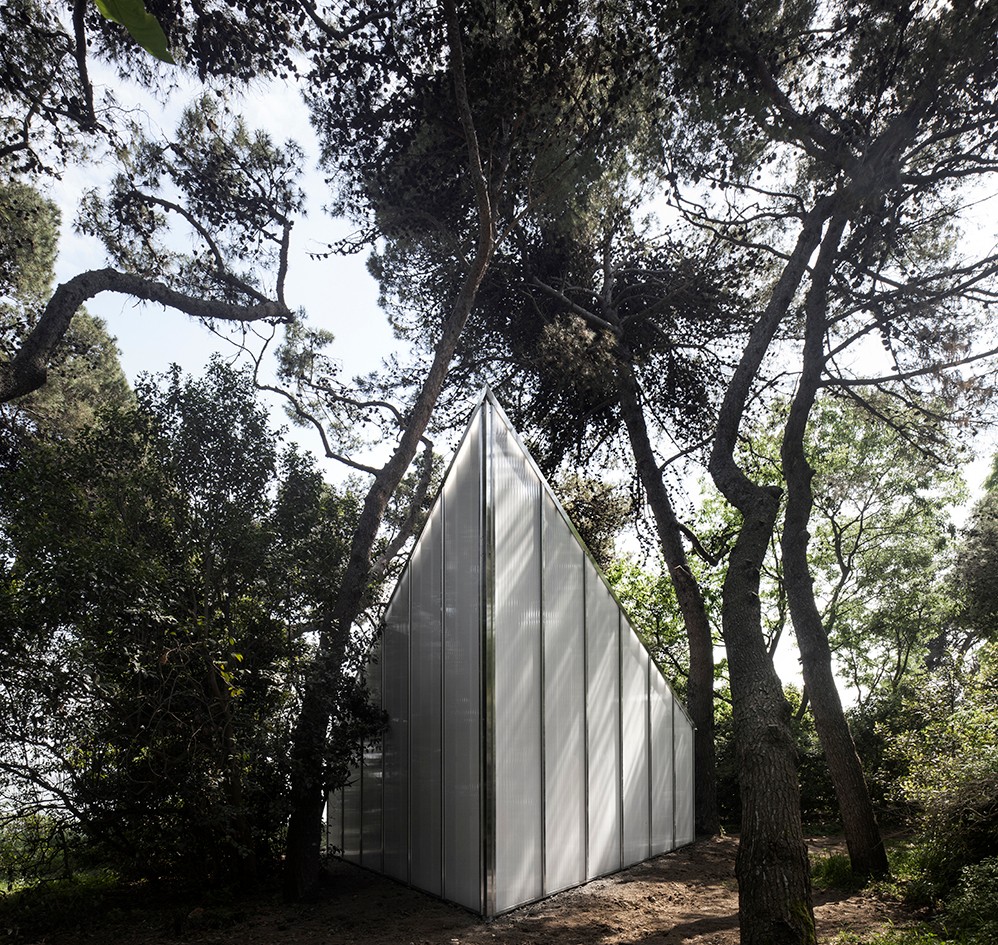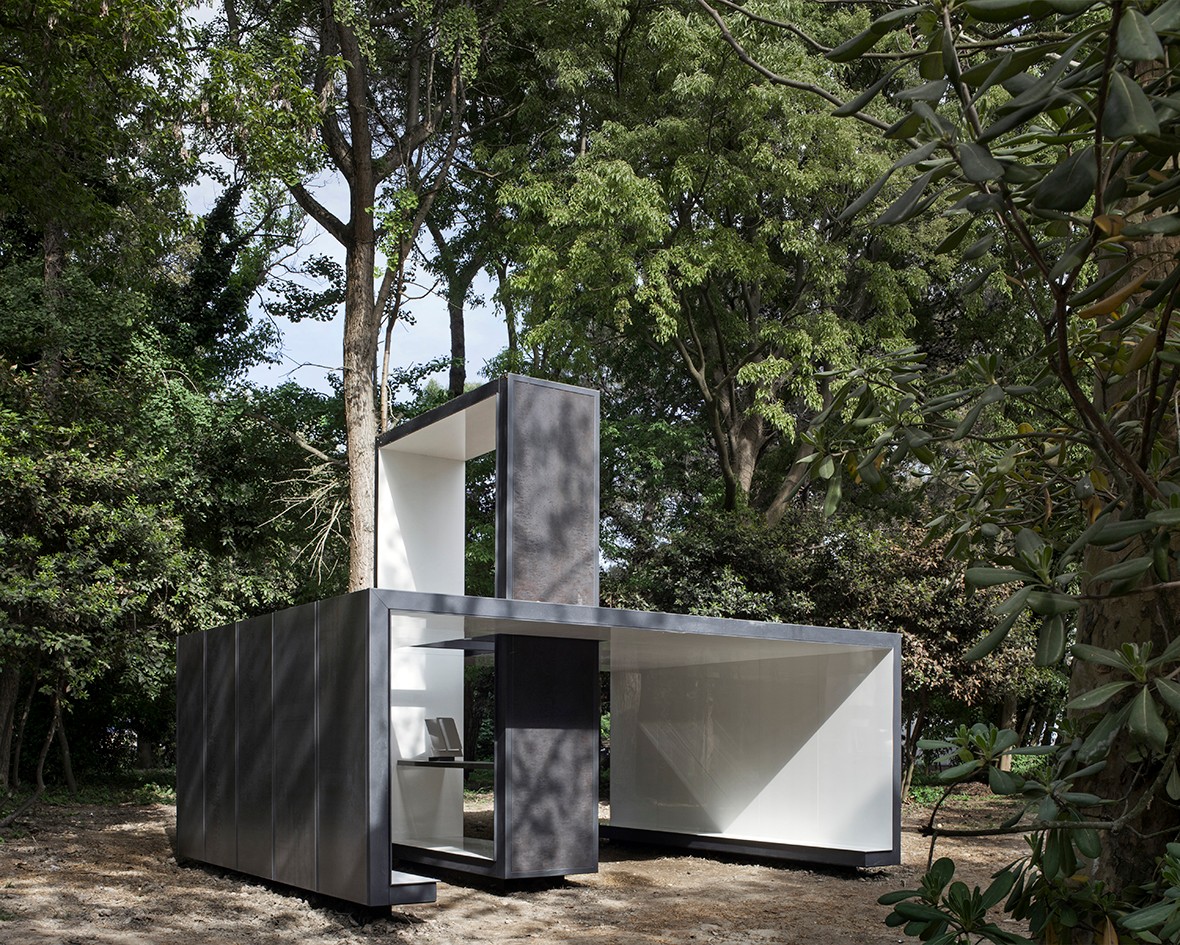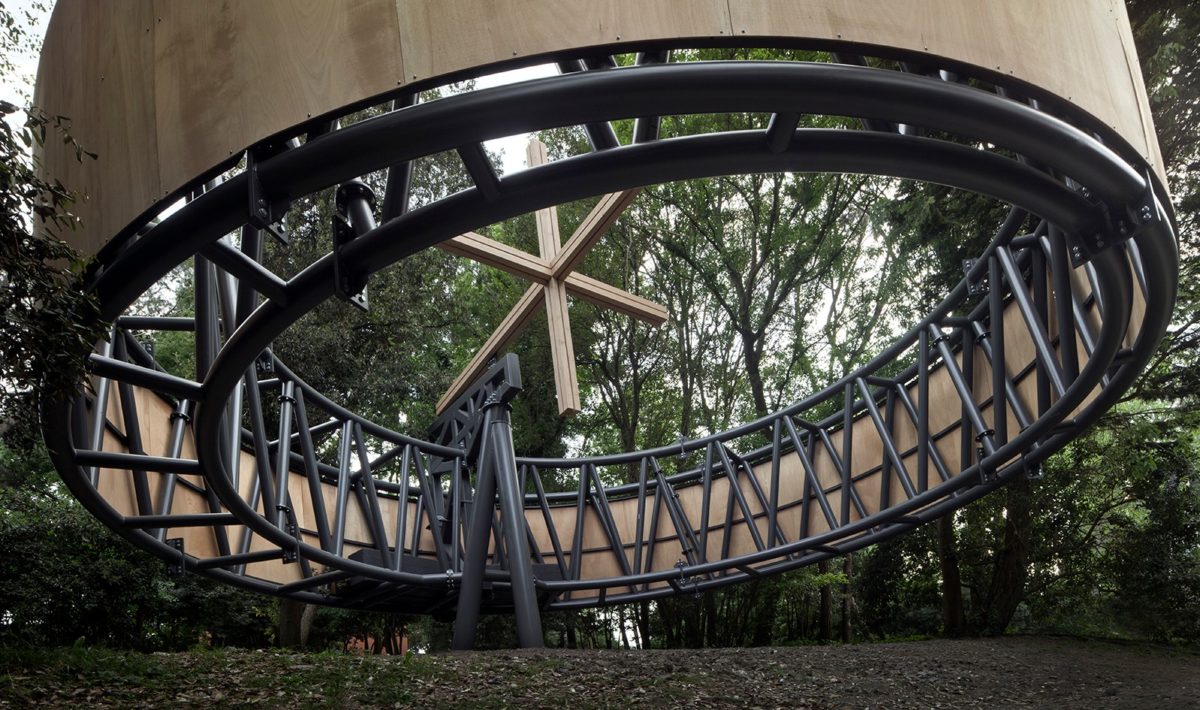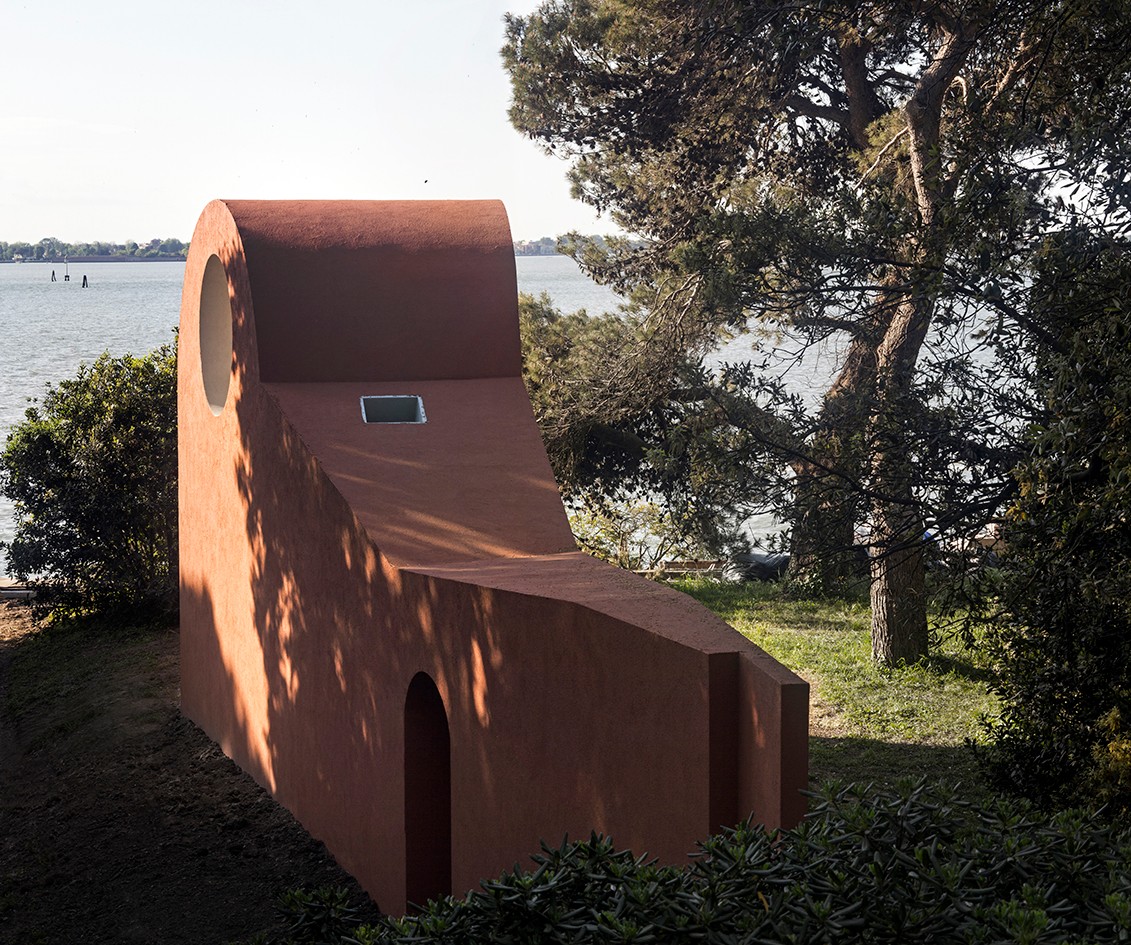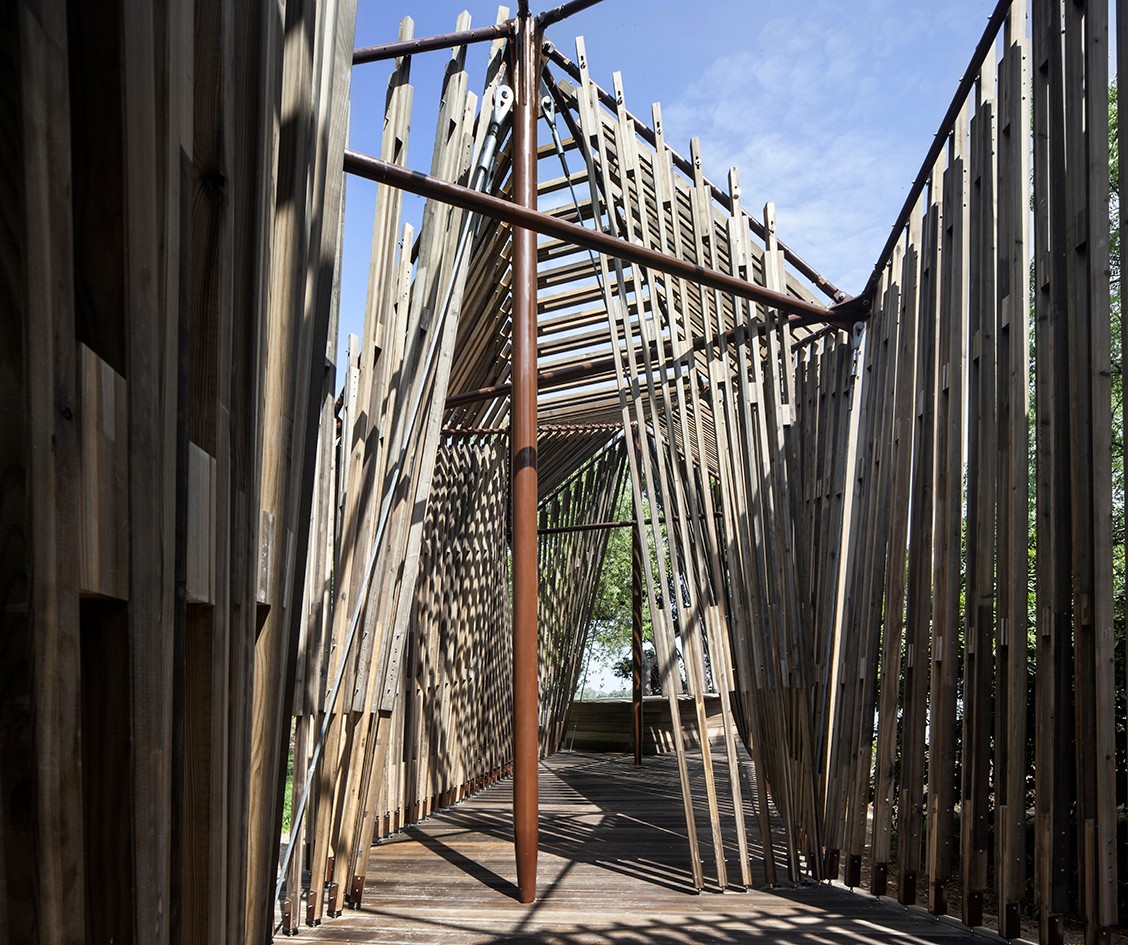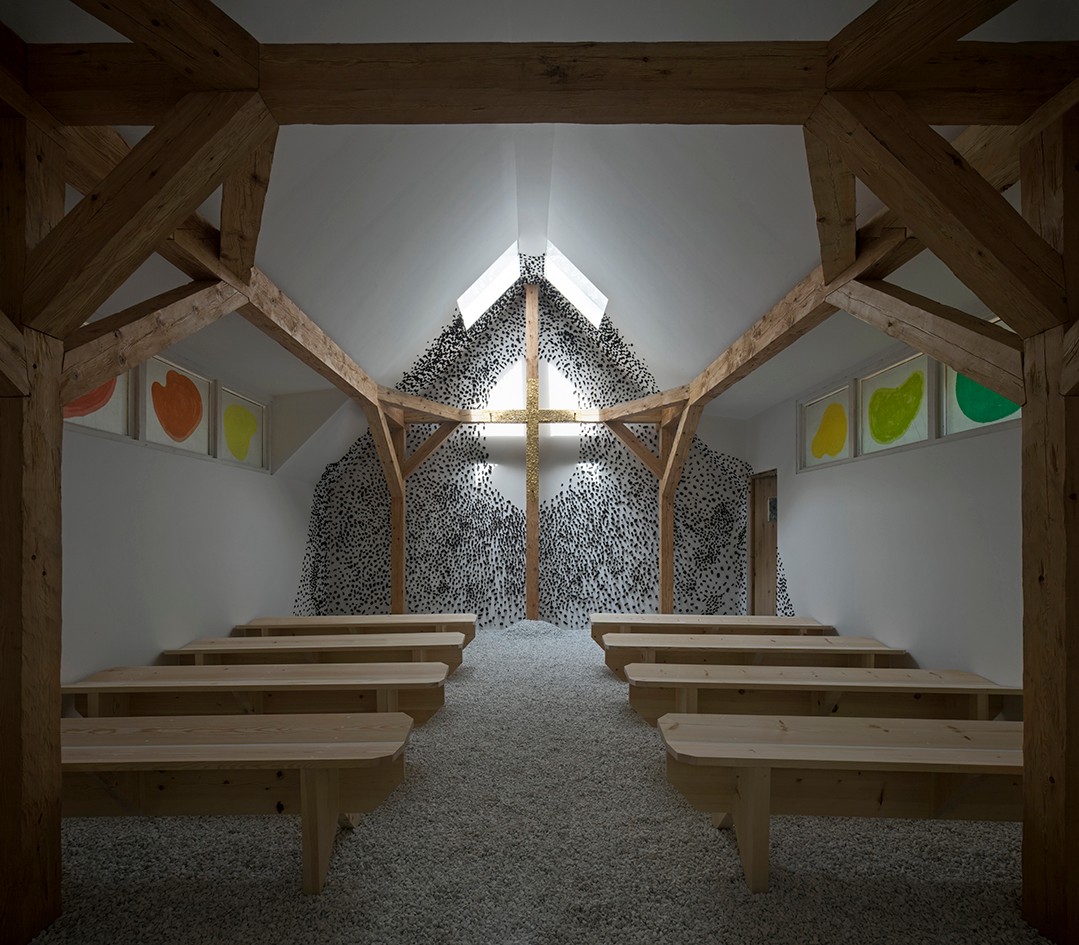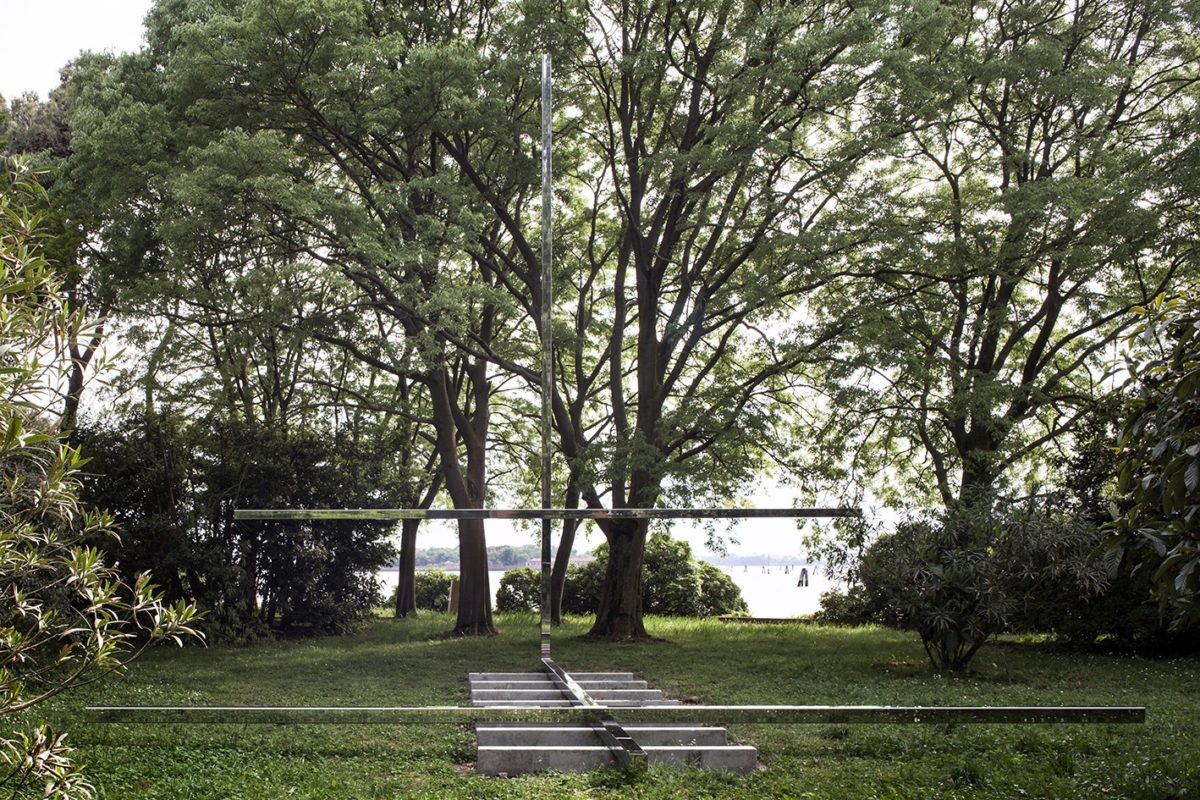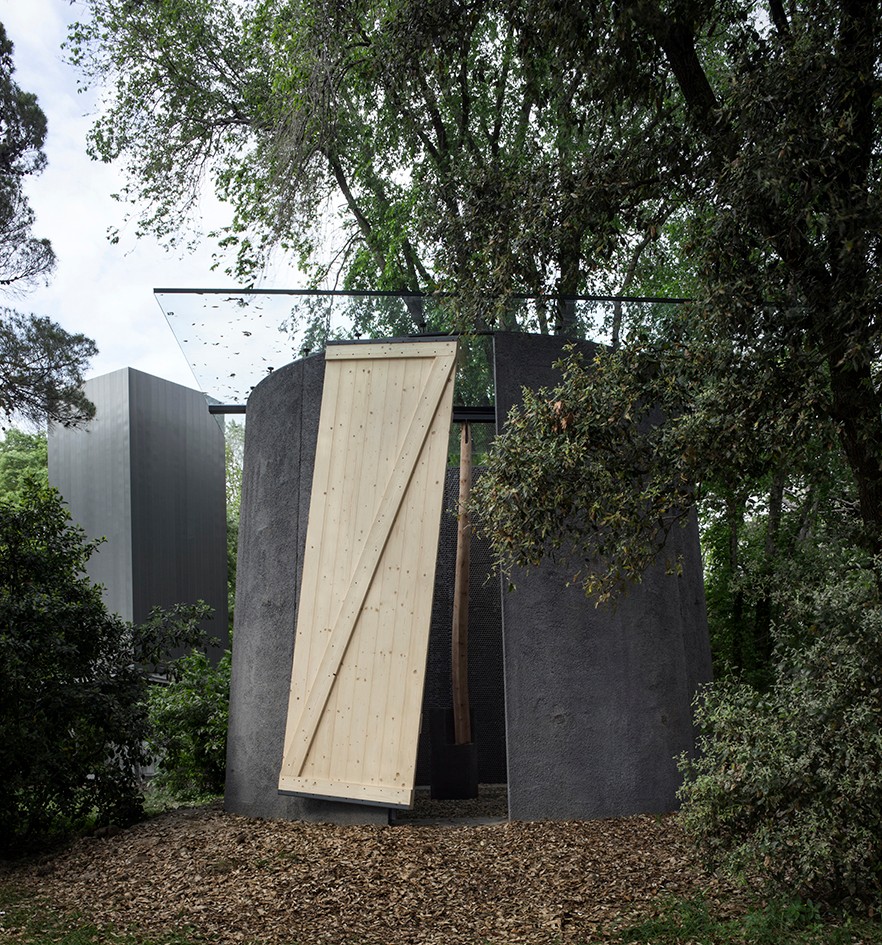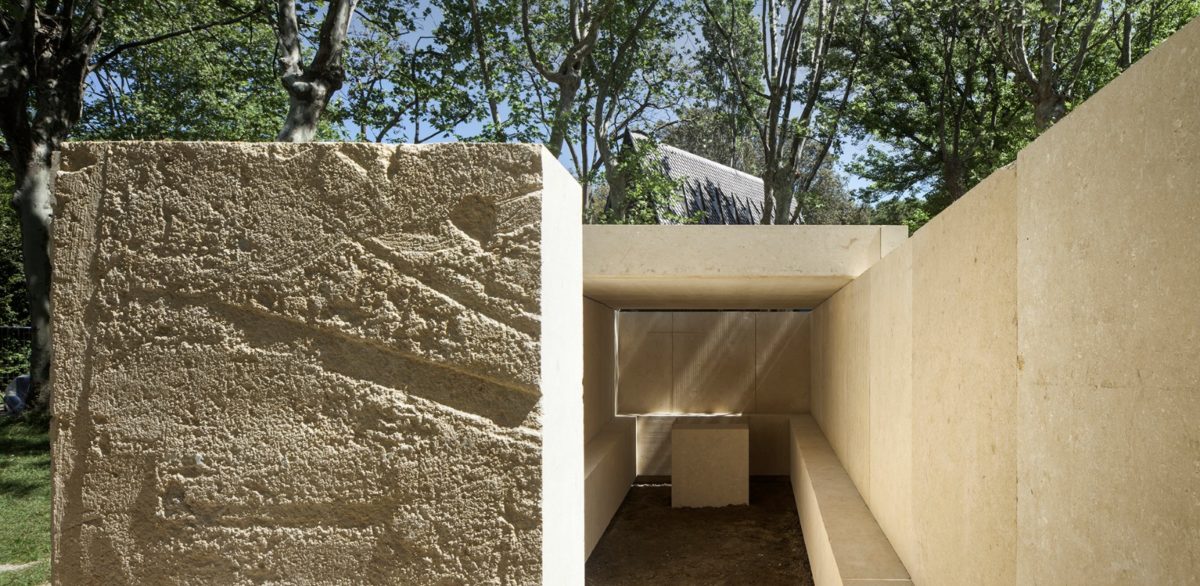It´s the first time the Holy See takes part in the Architecture Biennale Venice. Curator Francesco Dal Co invited 10 architects to design chapels. Located is the Holy See Pavillion on San Giogio Maggiore Island in a huge park owned by a private fondation. The 11. space is designed by Francesco Magnani and Traudy Pelzel to show the drawings of Gunnar Asplund, who build 1920 the famous Skogskapellet, the Woodland Chapel in Stockholm.
ANDREW BERMAN (USA) with Moretti, Terna, on their contribution for the Holy See pavillon: „The building for San Giorgio is a simple structure. Its kin are sheds, buildings assembled of readily available materials for simple shelter or use. It is framed of wood studs and rafters, painted white. All exterior surfaces are clad in translucent polycarbonate sheets. The interior is lined in black painted plywood. The plywood lining is folded down from the apex of the volume, allowing daylight to enter into the interior. The structure is a precise form of anonymous origin; an indeterminate presence in the landscape. The porch is a place for all to gather; a place from which to look out and urvey one’s surroundings. The bench within proposes a place to sit. It is a space for looking inward, under light amidst darkness.“
FRANCESCO CELLINI (Italy) with Panariagroup on their contribution for the Holy See pavillon: „This is not a project for a chapel: it is a reflection on this theme developed by a respectful architect who is not a believer. An architect guided by the intuition that any chapel is already inherently the physical embodiment of an idea, or a symbol, rather than a building truly intended as a space of ritual. Leaving aside examples it would be most correct to refer to as small churches, nevertheless capable of hosting a religious function (Asplund’s chapel, for example), or noble or cemeterial examples with the primary function of social representation, we are left with the others, the majority: isolated in cities or in the countryside; the most fascinating, beloved and problematic. Too small to host a mass, except outside and to commemorate a particular anniversary, even when they contain an altar and in some cases an indispensable ambone (or lectern), they are all characterized by a dedication and, in almost all cases, a corresponding icon.“
JAVIER CORVALAN (Paraguay) with Simeon: A Normadic Chapel
„Gunnar Asplund, in the forest, “unwound” a Nordic house together with the Pantheon, and we have tried to identify the thread of our project starting with Asplund. We have liberated the circle, a cross-section of a cylinder, placing it in balance on a point of support, a tripod, actually a Venetian “bricola.” The cylinder does not touch the ground; if the earth shakes the chapel moves, if the wind blows the chapel moves. (…) All the tensions combine in an embrace that is transformed into a three-dimensional cross, between the circular space and its roof which is wooded.“
RICARDO FLORES, EVA PRATS (Spain) with Saint-Gobain Italia on their contribution for the Holy See pavillon: The Morning Chapel „The chapel becomes a door to the forest, to the grander entity to which it belongs: a natural dome made out of the adjacency of tree branches. The fragmentary condition of the chapel is thus complemented by the pine forest, and borrows its natural qualities from the trees in it: the smell, the fresh air, the noises and the light. Both elements, built and vegetal, form a natural clearance that embraces the visitor and creates a place to stay. It is a change of rhythm, a change of breath. The chosen site is at the eastern part of the island, where the morning starts and the chapel can catch the first sun of the day. This chapel is an early morning place, where the first sunlight becomes visible through a ray of light that trespasses a circular hole in its wall.“
NORMAN FOSTER (UK) with Maeg, Tecno, Terna, on their contribution CROSSES MORPHED INTO A TENSEGRITY STRUCTURE for the Holy See pavillon: „On a visit to San Giorgio Island, close to Palladio’s magnificent church and the Teatro Verde, we found a green space with two mature trees beautifully framing the view of the lagoon. It was like a small oasis in the big garden, perfect for contemplation. The design concept started with three symbolic crosses and a timber deck set in the landscape, that would receive a lent-like membrane. Over time the crosses morphed into a tensegrity structure of cables and masts whilst the membrane evolved into a wooden latticework attached to the structure. The aim is to create a small sanctuary space diffused with dappled shade and removed from the normality of passers-by, focused instead on the water and sky beyond. The introduction of a direction change from the point of entry delays that experience and makes it a surprise to be discovered.
TERUNOBU FUJIMORI (Japan) with Barth Interni, LignoAlp, on their contribution „Cross Chapel“ for the Holy See pavillon: „The cross is unique as a symbol in the religious history of the world. Buddhism, Islam and Confucianism do not use scenes of death as symbols of the most important tenets of their faith. Buddha, Muhammad and Confucius were surrounded by disciples and died peaceful deaths. Designing a chapel for the first time, I decided to make the cross my theme. (…) The outer wall is in black, and suggests a place of quiet prayer.
The inner wall is coated with plaster with embedded pieces of charcoal pieces, but around the cross it remain pure white, emphasizing the gilded part. Visitors walk through a narrow passage to approach the “stable-like” building, and “enter by the narrow gate” to experience the sensation of the ascension of the Son of God when they see the cross.
SEAN GODSELL (Australia) with Maeg, Zintek, on their contribution A DYNAMIC ENTITY CAPABLE OF SURVIVING THOUSANDS OF KILOMETERS AWAY for the Holy See pavillon:
„Architecture exists at that moment where we identify the metaphysical in the artistic and logical arrangement of structure and materials. This recognition occurs when these elements are assembled in such a way that we see beyond their physicality and into our own spirituality. In other words, architecture is inevitably trapped within each of us, occasionally released by architects with the ability to interpret through built form our physical and psychological aspirations. Ad maiorem Dei Gloriam. I was educated by the Jesuits whose apostolic ministry was an integral part of my childhood. Jesuit missionaries brought not only the word of God, but also education, research and culture wherever they ventured and their existence instilled in me a sense of the church as a resilient, dynamic entity capable of surviving thousands of kilometers away from Rome. My design extends that idea to make a relocatable chapel that can be transported, erected, re-packed and transported and re-erected wherever the need exists.“
CARLA JUACABA (Brazil) with Secco Sistemi on their contribution A BENCH AND A CROSS for the Holy See pavillon: „A hidden glade behind the waters of Venice is ever a beauty. The project joins that beauty outlining briefly the space. Four steel beams, 8 meters long (12×12 cm thick), compose the ensemble: one is a bench, the other one is a cross. It is built on seven pieces of concrete (12x12x200cm), which give metric to the ensemble. Steel beams are made of highly polished stainless steel to reflect the surroundings: the chapel may disappear at a certain moment. And so the shadow of the ensemble may become more evident than the object itself. The presence of history surrounds, the use of a bench and a cross is ages.“
SMILJAN RADIC (Chile) with Moretti, Saint-Gobain Italia:A CHAPEL AS A ROADSIDE SHRINE
„According to the popular saying in Chile, a roadside shrine is a trap for the soul… But we know that these shrines are tribalized chapels where grieving people place flowers and candles for the tragically deceased. These shrines are normally found abandoned at the side of highways adorned with the shapes and colors of a circus, or with the austerity of the plain walls of a temple. On the other hand, if we look at historical examples, a chapel, any chapel, always hopes to be bigger than it is. It always pretends to be a church or a temple, hiding its smaller size, using large forms. Its scale is a trick. Perhaps due to this desire for greatness, the elements of architecture seen in them are miniaturized… windows, doors, columns are shrunk down, just big enough for a person to fit through, and their walls are large opaque sheets, avoiding the perforations that would betray this exquisite domestic size… All this confuses us and we are left doubting the human scale. In this way, in a chapel and also in a roadside shrine, the monumental and the domestic live in harmony. This seems to be the basis of the issue in my small conical chapel, with its thin walls and open roof.“
EDUARDO SOUTO DE MOURA (Portugal) with Laboratorio Morseletto on their Holy See-contribution „NO, IT IS NOT…
…no, it is not a chapel, not a sanctuary and in any case not a tomb. It is simply a place enclosed by four stone walls, while another stone at the center might be the altar. The entrance is screened by a tree we want to conserve. The walls, inside, have a ledge on which we can sit and wait… waiting with our feet on the ground, head in hands. “Things themselves know when they ought to happen.” (David Mourão-Ferreira)
